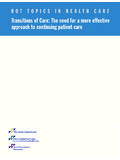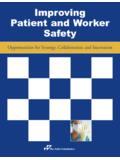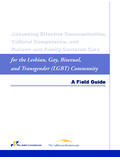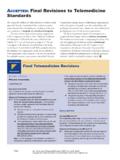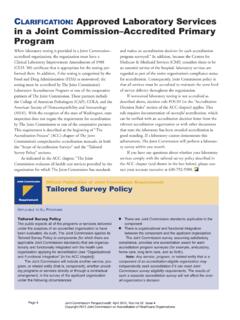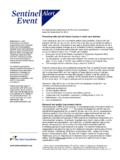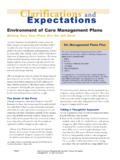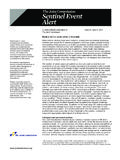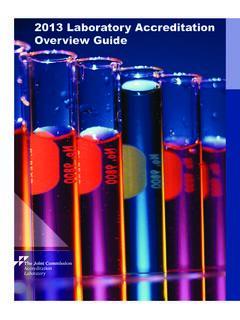Transcription of New and Revised Standards in Emergency Management
1 2021 The Joint Commission A complimentary publication of The Joint Commission Issue 34, Date of issue New and Revised Standards in Emergency Management Effective July 1, 2022, new and Revised Emergency Management Standards will apply to all Joint Commission accredited hospitals and critical access hospitals. The Joint Commission began conducting a critical analysis of its Emergency Management (EM) chapter in 2019. During the height of the COVID-19 pandemic, The Joint Commission received numerous inquiries pertaining to Emergency plans and response procedures. Based on the work already being performed on the EM chapter and the questions and issues that arose during the pandemic, the entire EM chapter for hospitals and critical access hospitals has been restructured to provide a meaningful framework for a successful Emergency Management program.
2 The changes in the EM chapter include a new numbering system, elimination of redundant requirements, and the addition of new requirements. This restructuring resulted in a reduction in the number of elements of performance from 124 to 60. Engagement with stakeholders, customers, and experts In addition to an extensive literature review and public field review, The Joint Commission sought expert guidance from the following groups: Standards review panel of more than 50 members who have current roles in Emergency Management . Members included representation from hospitals and critical access hospitals or other professional organizations.
3 The members provided a frontline point of view and insights into the practical application of the proposed Standards . Joint Commission workgroup of life-safety code field directors, Standards interpretation group-engineers, field staff clinical surveyors (physicians and nurses), and staff from Standards and survey methods. The prepublication version of the Emergency Management Standards will be available online until June 30, 2022. After July 1, 2022, please access the new requirements in the E-dition or Standards manual. Emergency Management Requirement Standard : The hospital has a comprehensive Emergency Management program that utilizes an all-hazards approach.
4 Rationale A comprehensive Emergency Management (EM) program provides a systematic analysis for planning, shared decision-making, internal and external collaborations, and assignment of available resources (staff, space, supplies) to effectively prepare for, respond to, and recover from all incidents and emergencies. The critical components to the program include Emergency policies and procedures; communication and coordination of response activities; education and training; testing and evaluating exercises; and resources. The structure Published for Joint Commission-accredited organizations and interested health care professionals, R3 Report provides the rationale and references that The Joint Commission employs in the development of new requirements.
5 While the Standards manuals also may provide a rationale, R3 Report goes into more depth, providing a rationale statement for each element of performance (EP). The references provide the evidence that supports the requirement. R3 Report may be reproduced if credited to The Joint Commission. Sign up for email delivery. Issue 34, Issue date Page 2 New and Revised Standards in Emergency Management 2021 The Joint Commission should be designed to respond to any type of Emergency (all-hazards approach) because of the wide array of possible emergencies and the impossibility of predicting all emergencies that could occur at an organization.
6 Reference* Centers for Medicare and Medicaid services . (2021, April 16). State Operations Manual Appendix Z. (2021, February 19). Planning. veterans health administration Office of Emergency Management . (2021, May 5). Department of veterans Affairs. NFPA 1600: Standard on Continuity, Emergency , and Crisis Management , 2019 edition. NFPA 99: health Care Facilities Code, 2012 edition. Requirement Standard : Hospital leadership provides oversight and support of the Emergency Management program. Rationale The oversight of senior leaders, leaders of the medical staff, and department leaders in the development and implementation of the EM program is necessary as they are ultimately responsible for maintaining safe operations during an Emergency and often need to make significant and timely decisions.
7 The identification of a qualitied EM program coordinator is important to ensure that critical components of the program are addressed in the mitigation, preparedness, response, and recovery phases and integrated throughout the organization and within the larger community response network. A multidisciplinary approach makes certain that the Emergency Management program, the operations plan, policies and procedures, and education and training include the insights across disciplines and departments. Reference* Centers for Medicare and Medicaid services . (2021, April 16). State Operations Manual Appendix Z. The American College of Healthcare Executives.
8 (2020, November). Healthcare executives role in Emergency Management . NFPA 1600: Standard on Continuity, Emergency , and Crisis Management , 2019 edition. NFPA 99: health Care Facilities Code, 2012 edition. The Assistant Secretary for Preparedness and Response (ASPR): Technical Resources, Assistance Center, Information Exchange (TRACIE). (2021, April). Leadership during a disaster. Requirement Standard : The hospital conducts a hazard vulnerability analysis utilizing an all-hazards approach. Rationale Organizations should continually evaluate their known risks and prioritize them to understand their vulnerabilities and prepare to respond to emergencies.
9 The risk assessment includes an evaluation of the natural hazards, human-caused hazards, technological hazards, hazardous materials, and emerging infectious diseases that could impose a significant risk to a health care organization and its off-site locations. The risks are prioritized to determine which of these presents the highest likelihood of occurring and the impacts those hazards will have on the operating status of the hospital and its ability to provide services . Issue 34, Issue date Page 3 New and Revised Standards in Emergency Management 2021 The Joint Commission Reference* Centers for Medicare and Medicaid services .
10 (2021, April 16). State Operations Manual Appendix Z. The Assistant Secretary for Preparedness and Response (ASPR): Technical Resources, Assistance Center, Information Exchange (TRACIE). (2018, October), Evaluation of Hazard Vulnerability Assessment Tools Comparison chart. The Centers for Disease Control and Prevention. ( ) Hospital all-hazards self-assessment tool. NFPA 1600: Standard on Continuity, Emergency , and Crisis Management , 2019 edition. NFPA 99: health Care Facilities Code, 2012 edition. Requirement Standard : The hospital develops an Emergency operations plan based on an all-hazards approach.
